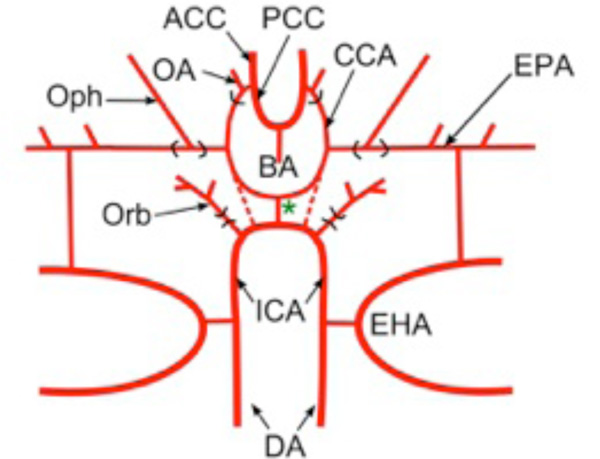Fig. (1) Terminology of Main Cerebral Arterial Branches:
Schematic diagram modified after Allis [9] showing main stems
and branches of the internal carotid arterial pathways typical for
vertebrates. Vessels supplying the internal carotid (ICA) vary
widely among vertebrates but primitively include the paired dorsal
aorta (DA) and efferent vessels of the hyoid (efferent hyoid artery,
EHA) and mandibular arches (efferent pseudobranchial arteries,
EPAs). Distribution branches supplying structures outside of the
braincase typically include an orbital artery (Orb) branching from
the extracranial internal carotid and an ophthalmic artery (Oph)
branching from the EPAs (or equivalent). The cerebral carotids
(CCAs) arise either as continuations of the paired dorsal aorta
(dashed lines) or by bifurcation of a midline, unpaired carotid (=
encephalic) trunk (green *). The cerebral carotids divide into
anterior (ACCs) and posterior (PCCs) divisions, with an optic
artery (OA) arising either immediately before or after the
branching. The PCCs either meet in the midline beneath the rostral
hindbrain to form an unpaired basilar artery (BA), or they continue
caudally as paired basilar (rhombencephalic) vessels.


